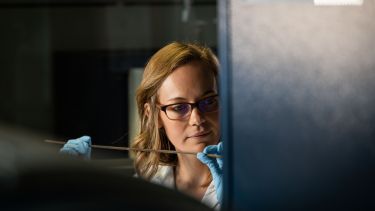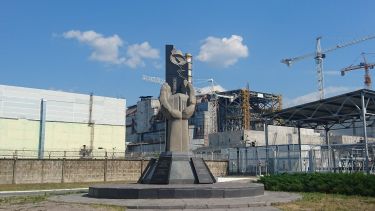Dr Claire Corkhill and Professor Neil Hyatt – from the University of Sheffield Energy Institute and Immobilisation Science Laboratory - who are renowned for their research and expertise on nuclear waste, have been appointed to HM Government’s Advisory Committee on Radioactive Waste Management (CoRWM).
CoRWM will draw on their many years’ experience developing and evaluating solutions for the long-term safe storage of waste materials to help advise ministers of the UK government on the plans and programmes for long-term management of higher activity radioactive wastes.
Dr Claire Corkhill and her team from the Department of Materials Science and Engineering have most recently been developing materials to aid the clean-up efforts taking place around the Chernobyl and Fukushima nuclear power stations.
Working in collaboration with scientists in Ukraine, Dr Corkhill and the team are able to simulate the Lava-like Fuel Containing Materials (LFCMs) that are obstructing decommissioning efforts at the nuclear disaster sites. LFCMs are a mixture of highly radioactive molten nuclear fuel and building materials that fuse together during a nuclear meltdown.
In the case of Chernobyl, the mixture of molten fuel, cladding, steel, concrete and sand formed nearly 100 tonnes of highly radioactive glass-like lava, which flowed through the nuclear power plant and has solidified into large masses, and as a result are incredibly difficult and dangerous to remove from the sites.
The masses present a highly dangerous risk to personnel and the environment in the surrounding area and could remain a hazard for decades, even millennia, unless something can be done to stabilise or remove them. However, very few samples of these meltdown materials are available to study and the masses are often too hazardous for people or even robots to get close to in order to better understand the behaviour of the materials.
Dr Corkhill said:
“Understanding the mechanical, thermal and chemical properties of the materials created in a nuclear meltdown is critical to help retrieve them, for example, if we don’t know how hard they are, how can we create the radiation-resistant robots required to cut them out?”
Dr Corkhill added:
“The major difficulty in understanding the real materials is that they are too hazardous to handle and, although the Chernobyl accident happened over 33 years ago, we still know very little about these truly unique nuclear materials.
“Thanks to this research, we now have a much lower radioactivity simulant meltdown material to investigate, which is safe for our collaborators in Ukraine and Japan to research without the need for radiation shielding. Ultimately this will help advance the decommissioning operations at Chernobyl and also at Fukushima too.”



